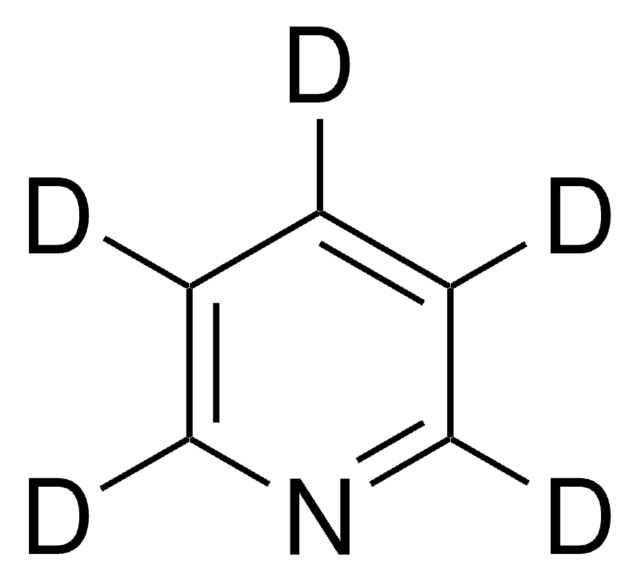73059
Potassium thiocyanate solution
volumetric, 8 M KSCN
Synonym(s):
Potassium rhodanide
About This Item
Recommended Products
product line
BioUltra
Quality Level
form
liquid
quality
volumetric
concentration
8 M KSCN
impurities
insoluble matter, passes filter test
pH
6-11 (25 °C, 8 M in H2O)
solubility
H2O: 8 M at 20 °C, clear, colorless
density
1.342 g/mL at 20 °C
1 g/mL at 25 °C (lit.)
anion traces
chloride (Cl-): ≤50 mg/kg
sulfate (SO42-): ≤50 mg/kg
sulfide (S2-): ≤20 mg/kg
cation traces
Al: ≤1 mg/kg
As: ≤0.1 mg/kg
Ba: ≤10 mg/kg
Bi: ≤1 mg/kg
Ca: ≤5 mg/kg
Cd: ≤1 mg/kg
Co: ≤1 mg/kg
Cr: ≤1 mg/kg
Cu: ≤1 mg/kg
Fe: ≤1 mg/kg
Li: ≤1 mg/kg
Mg: ≤1 mg/kg
Mn: ≤1 mg/kg
Mo: ≤1 mg/kg
NH4+: ≤10 mg/kg
Na: ≤200 mg/kg
Ni: ≤1 mg/kg
Pb: ≤2 mg/kg
Sr: ≤1 mg/kg
Zn: ≤1 mg/kg
absorption
cut-off at 274 nm in H2O at 8 M
SMILES string
[K+].[N-]=C=S
InChI
1S/CHNS.K/c2-1-3;/h3H;/q;+1/p-1
InChI key
ZNNZYHKDIALBAK-UHFFFAOYSA-M
Looking for similar products? Visit Product Comparison Guide
Related Categories
Signal Word
Danger
Hazard Statements
Precautionary Statements
Hazard Classifications
Acute Tox. 4 Dermal - Acute Tox. 4 Inhalation - Acute Tox. 4 Oral - Aquatic Chronic 3 - Eye Dam. 1
Supplementary Hazards
Storage Class Code
12 - Non Combustible Liquids
WGK
WGK 1
Flash Point(F)
Not applicable
Flash Point(C)
Not applicable
Personal Protective Equipment
Choose from one of the most recent versions:
Already Own This Product?
Find documentation for the products that you have recently purchased in the Document Library.
Customers Also Viewed
Our team of scientists has experience in all areas of research including Life Science, Material Science, Chemical Synthesis, Chromatography, Analytical and many others.
Contact Technical Service








